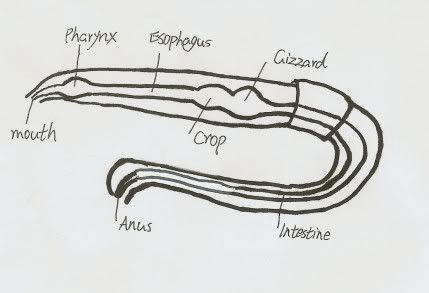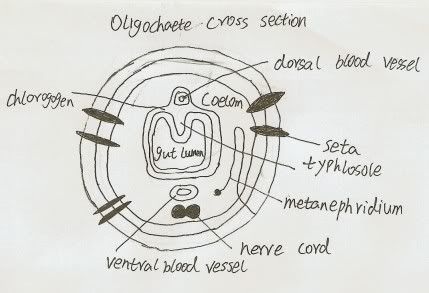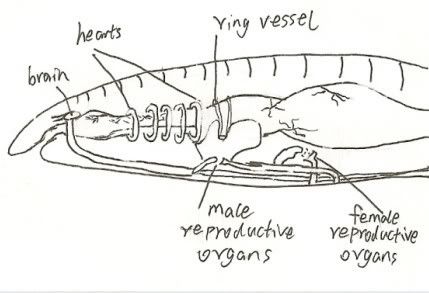General Anatomy



Habitat
All annelids use their habitat primarily for food or shelter. Many species use the ground to burrow for safety, and many polychaetes are tube-dwellers, who burrow into tubes found in the muddy bottom of the ocean or beaches. Still others actually eat their habitats. Called non-selective deposit feeders, these annelids eat mud, sand, or soil. The organic matter is then digested; however, since the amount of nutrition gained by this type of feeding is quite small, non-selective deposit feeders must eat almost continuously.
Annelids are found world-wide. Nearly 2/3 of the known annelids falls under the Class Polychaetes and are typically marine organisms. These marine worms can be found anywhere from shallow beach waters to deep ocean trenches. The remaining 1/3 of the Class Polychaetes can be found in freshwater and very moist land. Another class of annelid worms is the Oligochaeta. Oligochaeta are typically found on land or in freshwater; these are the worms that people usually associate with “segmented worms”, such as earthworms. The last class, Hirundinea, is typically comprised of freshwater dwellers; however, there are a few land and marine species. Hirundinea includes animals such as leeches.
Vocabulary:
Annelid: round wormlike animal that has a long segmented body and belongs to the phylum annelida
Polychaetes: segmented worm usually marine characterized by paired paddle like appendages on its body segments and a bristly body
Oligochaeta: Annelid worm belonging to the class that contains common earthworm and related species that live in soil and in water
Leech: annelid worm that typically exists as an external parasite that drinks the blood and body fluids of its host
Longitudinal muscles: runs for the front of the worm to the rear. When these muscle contact they make the worm skinnier
Clitellum: it secretes a mucus ring into which egg and sperm are released.
Pharynx: muscular front end of the digestive tube which can be extend to catch food


0 Comments:
Post a Comment
Subscribe to Post Comments [Atom]
<< Home